By Emily McAtee.
Two years ago, a colt called American Pharaoh won the Triple Crown: the first horse to do so since Affirmed took away the title in 1978. The horse world stirred when his owner continued to race him, and we wondered why he didn’t quit while he was ahead. When American Pharaoh took 2nd at Saratoga two races later, we criticized the owner for continuing to race him instead of enjoying his winning streak. Then American Pharaoh came back and won the Breeder’s Cup Classic in Keeneland, and we all forgave his owner for continuing to race him. American Pharaoh is now residing at Coolmore Ashford Stud, where his stud fee is a cool $200,000 per live foal. It’s the happy ending that reminds us of all of the racing movies we grew up with, like National Velvet and Seabiscuit.
American Pharoah. (The Daily Mail)
But what happens to the losers?
Well, some continue to race (Divining Rod, who ran against American Pharaoh), and some are retired and standing at stud (Firing Line, who also ran against American Pharaoh, is now standing at Crestwood Farm with a $5000 stud fee).
Divining Rod. (horseracingnation.com)
Firing Line. (horseracingnation.com)
But of course, these are horses that were able to compete in the Triple Crown, so their futures are pretty secure. What about the horses who never make it that far? What happens to the ones that just aren’t bringing in money the way that they used to, or that just never had a love for racing in the first place?
If you’ve been around the racing industry, you might be gritting your teeth a little, because we all know the different avenues that a horse can take once his racing days are done. Some are good… some are not. Thankfully, my job today is to talk about one of the good avenues opening up to racehorses everywhere: The Retired Racehorse Program.
The Retired Racehorse Program (RRP)’s goal is to “facilitate placement of Thoroughbred ex-racehorses in second careers by increasing demand for them in equestrian sports and serving the farms, trainers, and organizations that transition them.” It was started in 2010 and really took off in 2015 with the introduction of the Thoroughbred Makeover. The $100,000 in prize money drew in nearly 200 trainers across 10 different disciplines. This was followed up in 2016 by 480 trainers from 45 different states, 3 Canadian provinces, and apparently a few trainers from England. This year, RRP has announced that the number of competitors has grown yet again, to a remarkable 578 trainers, all searching and buying up retired racehorses to train for second careers. I am pleased to say that I am one of the 578.
I first heard about the Thoroughbred Makeover in 2015, and I wanted to do it in 2016, but I had been told that the Army would probably repost my husband and me elsewhere during the year, so I chose to abstain. I ignored a lot of the news surrounding RRP that year, purely out of jealousy that 480 trainers had their horses to take to this huge competition, and I did not. Once the 2016 competition was over, I started watching their site very closely again, determined that I would not let this chance slip by me again. I think I had my application in within 24 hours of registration being opened. I had to jump through an extra hoop or two (which basically consisted of sending a video showing that I can, in fact, ride a horse), because I don’t have the same show record or experience as a great many of the riders who applied, and they wanted to be certain that I would a) show up and b) not embarrass them. Either way, I was gratified to receive an acceptance letter so that I could begin my search for my RRP partner.
The figurative “cherry on top.”
Finding a horse turned out to be a bit of a nightmare. Since this year’s Thoroughbred Makeover is basically my grad project before I leave Harmony Equestrian Services in about a year, I thought I would try to be as professional as possible. So I put together a beautiful business letter asking various Thoroughbred trainers, owners, breeders, racetracks, and rescues to send me a horse. I sent out 28 letters… and received 3 responses.
28 Business Letters and a full weekend of my life.
For how much effort I had put in, it felt like a rather underwhelming response. Part of the reason I had such a frustrating experience finding a horse is probably because of the Thoroughbred Makeover. The demand for OTTBs has risen, and so in spite of the fact that I kept hearing that people needed to get rid of their racehorses, I could no longer find anyone who was going to just give me a racehorse: I had a long list of criteria and a small budget, and finding the perfect balance between the two was not easy. I even had one woman tell me that if I bought a horse for anything less than $2000, it would break down before I ever made it to the competition. Eventually, I ended up going through a local and fairly new rescue called the Gulf Coast Thoroughbred Network (GCTBN) to try to find a horse, and I am quite certain that Brandi McGovern (who was my point of contact) finally got sick of my incessant phone calls and was relieved that I finally just chose a horse and left her alone.
Eventually I came home with a 15.2 hh 7 year old sorrel OTTB by the name of Champali Lake. What I know for certain about him is that his last race was in April of 2016, where he came in 8th. I believe he was sent to the kill pen around June. When the GCTBN pulled him from the kill pen, he had a sub-solar abscess that was so extreme that the sole of his foot could be pulled back. After several months in foster care, his hoof healed, he put on weight… and then managed to lose some of it again. When I first went to see him, he was at about a 3 or 4 on the Henneke body condition scale, and Brandi was apologizing profusely for how skinny he had gotten. I looked at him and went “Oh, he’s still at a 4, that’s perfectly acceptable. The last one I looked at I could have gone paragliding using his hip bones.” And we continued on to have a wonderful conversation. I found her to be intelligent, devoted to the welfare of her animals, and the owner of a warped sense of humor very akin to my own. During my assessment I found that Champali Lake was timid, but still willing and eager to please. His hamstrings were tight, but his back was not. The motion of his joints was inclined to be stiff, but his motion was naturally elegant and floating. I got very excited, because the potential was there, and that was all I needed.
Champali Lake
We are now on about week 7 of our training, with 26 weeks remaining. For the time being we are training in low level Dressage to help him stretch and get strong again, and then we will start introducing him to other disciplines as well to see if there’s something that he absolutely loves. So far, he’s taken to Dressage like a puppy to water: a little timidly at first, but now happy to play this game we call “training.” Since he is doomed to another 6 months of Dressage training, he has also been condemned to a barn name worthy of the pomp and circumstance of the Dressage Ring: “Champagne.” He’s already made astonishing progress, surpassing all of my expectations so far. I’m excited to see where we go from here, and I hope you’ll join us on our journey toward the 2017 Thoroughbred Makeover.
Sources:
https://www.retiredracehorseproject.org/
https://www.retiredracehorseproject.org/2016-thoroughbred-makeover/1191-100-000-thoroughbred-makeover-attracts-top-trainers-from-ten-sports
https://www.retiredracehorseproject.org/2017-thoroughbred-makeover/1331-100-000-thoroughbred-makeover-launched-with-578-trainers
http://www.dailymail.co.uk/news/article-4088232/American-Pharoah-welcomes-foal.html
http://www.equibase.com/profiles/Results.cfm?type=Horse&refno=8835978®istry=T
http://www.habitatforhorses.org/the-henneke-body-condition-scoring-system/
http://www.horseracingnation.com/horse/Firing_Line
http://www.horseracingnation.com/horse/Divining_Rod
http://www.gctbnetwork.org/

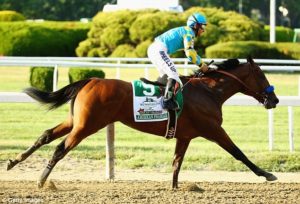
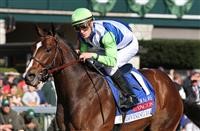
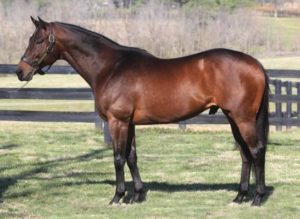

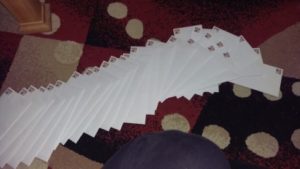
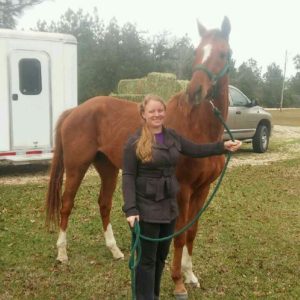



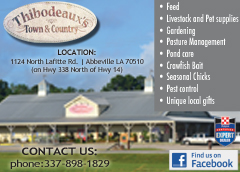
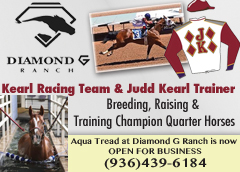
This is so cool, Emily! Best of luck with Champagne. I’ll follow your journey through your blog and fb as always. =)